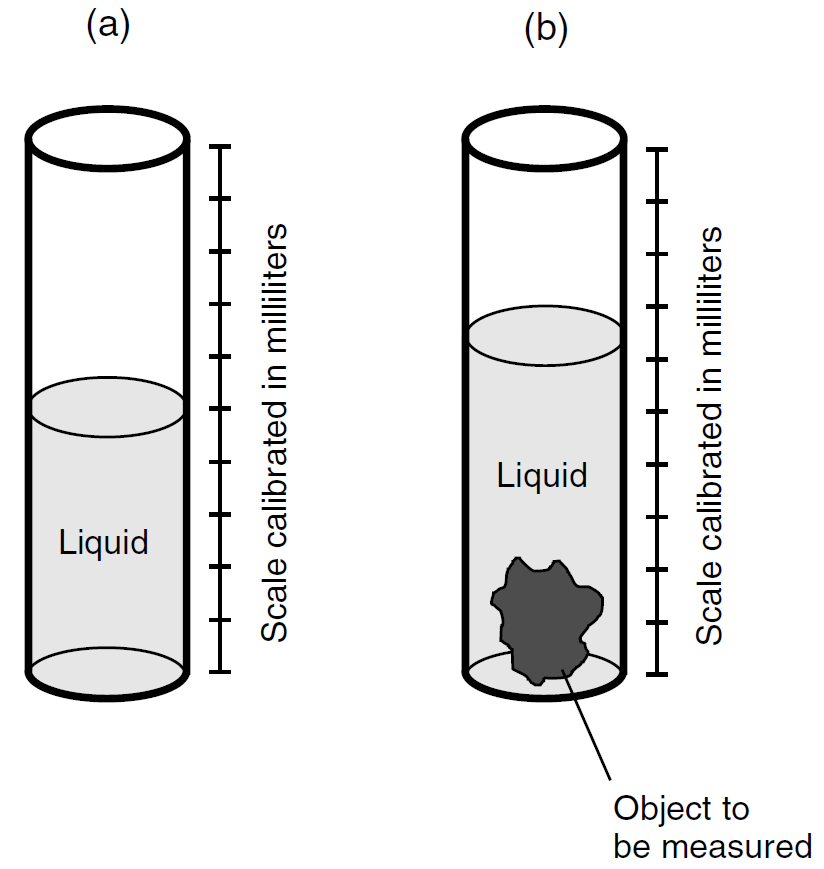


 الفيزياء الكلاسيكية
الفيزياء الكلاسيكية
 الكهربائية والمغناطيسية
الكهربائية والمغناطيسية
 علم البصريات
علم البصريات
 الفيزياء الحديثة
الفيزياء الحديثة
 النظرية النسبية
النظرية النسبية
 الفيزياء النووية
الفيزياء النووية
 فيزياء الحالة الصلبة
فيزياء الحالة الصلبة
 الليزر
الليزر
 علم الفلك
علم الفلك
 المجموعة الشمسية
المجموعة الشمسية
 الطاقة البديلة
الطاقة البديلة
 الفيزياء والعلوم الأخرى
الفيزياء والعلوم الأخرى
 مواضيع عامة في الفيزياء
مواضيع عامة في الفيزياء|
Read More
Date: 14-5-2017
Date: 30-12-2020
Date: 18-5-2017
|
MEASURING SOLID VOLUME
Suppose, in the preceding problem, that the object in question is irregular. How can we know that its volume is 45.3 cm3? It would be easy to figure out the volume if the object were a perfect sphere or a perfect cube or a rectangular prism. Suppose, however, that it’s a knobby little thing? Scientists have come up with a clever way of measuring the volumes of irregular solids: Immerse them in a liquid. First, measure the amount of liquid in a container (Fig. 1a). Then measure the amount of liquid that is

Fig. 1. Measuring the volume of a solid. (a) a container with liquid but without the sample; (b) a container with the sample totally submerged in the liquid.
displaced when the object is completely submerged. This will show up as an increase in the apparent amount of liquid in the container (see Fig. 1b). One milliliter (1 ml) of water happens to be exactly equal to 1 cm3, and any good chemist is bound to have a few containers marked off in milliliters. This is the way to do it, then, provided the solid does not dissolve in the liquid and that none of the liquid is absorbed into the solid.



|
|
|
|
دراسة تحدد أفضل 4 وجبات صحية.. وأخطرها
|
|
|
|
|
|
|
جامعة الكفيل تحتفي بذكرى ولادة الإمام محمد الجواد (عليه السلام)
|
|
|